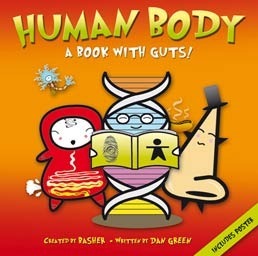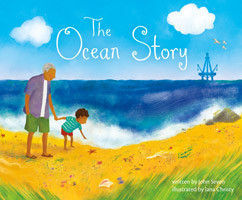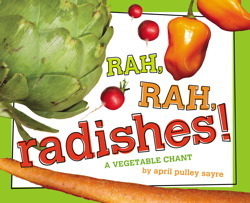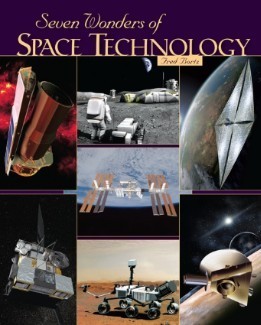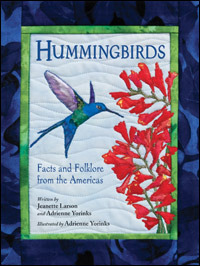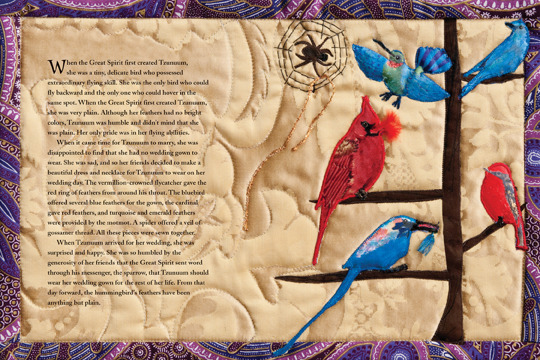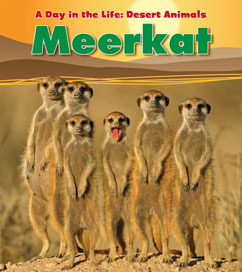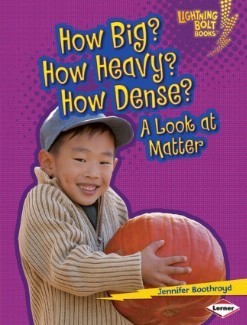Shirley Smith Duke's Blog, page 9
July 12, 2011
HUMAN BODY A Book With Guts!
Human Body
A Book With Guts
By Dan Green
Created by Basher
Kingfisher, 2011
ISBN # Age Range: 10 and up
ISBN: 978-0-7534-6501-1
Grades 5 and up
"Your body is a most amazing machine. It is armed with toollike hands, propelled by two legs, and governed by a brain capable of independent thought (well, sometimes), speech, and problem solving. Supertough on the outside—think skin, hair, nails000your insides comprise all the delicate organs and impressively sophisticated body systems that keep you in perfect shape."
Human Body follows Basher's series style with funny and fun-filled facts about all aspects of the human body in this one. Told in the chatty, irreverent manner with subdivisions that include the main groups of body systems, the book will take middle grade kids on a fact-packed ride through the body. Man, woman, and baby are introduced, followed by body building blocks, and funny, descriptive titles for the body systems that follow, such as Wheezing Windbags and Bloody Busybodies (circulatory and respiratory systems), Food Crew and Trash Gang (digestive) Team Players and System Administrators (lymph, immunity, and glands).
A cartoon image faces the text side of the page and helps illustrate the scientific information. The book includes an index and glossary, plus a poster of the overall picture of the book.
The appeal of this book is that it can be read straight through or read out of order, section by section. It is easy to follow and understand and presents information aimed at the middle grade kids who are being introduced to the body and its functions. This is a fun one and reveals the body processes in more like an action film than a science text.
Activity
Choose one body system and list the organs and other parts that make up that system. Look up more quantitative facts for each listed part.
Quantitative facts include facts with numbers.
Trace the movements of what that body system does.
This site has good detailed information about body systems.
This site has more facts about the body systems. It does include the male and female reproductive systems.
National Science Standard: structure and function in living systems
Book provided by publisher








July 5, 2011
The Ocean Story
By John Seven
Illustrated by Jana Christy
Picture Window Books, Capstone, 2011
ISBN # 9781404867857
Picture book with facts
Grades K-2
"Why is the ocean so very big?"
"It need to be big to hold a story that is so very old."
The Ocean Story relates the events occurring in the ocean told by an adult to a young child. In lovely, spare language, the water cycle, the creatures in the ocean, and the problems affecting its waters are presented in a straightforward style that young children can easily understand. It's a simple explanation for these concepts and perfect for an introduction to all the aspects of the oceans in today's world.
The art is appealing and child-friendly. The more unusual creatures are named in the art and some of them are presented with the sounds they make. The art highlights the problems that take place, including oil spills, while presenting a beautiful palette of colors that show the story as it unfolds.
The book ends with the idea that the earth and oceans are part of one another, and we must do our part to keep the ocean story alive.
Activity 1
Look up one of the animals shown in the art. Find out where the animal lives in the ocean, such as deep water, tide pool, coral reef, estuary, or shallow water. Chose some interesting facts and report on that animal.
Look for animal information at National Geographic site.
This site has information about the ocean ecosystems.
Find more information about the ecosystems here.
NASA has marine animal facts
Activity 2
Find information about the different zones of the ocean. Draw and label the different zones. Include some animals in the picture.
This site has ocean zone information.
The Living Sea has ocean zone information and a good diagram.
National Science Standard: organisms and their environment
Book provided by publisher








June 28, 2011
Rah, Rah, Radishes!
By April Pulley Sayre
Beach LaneBooks, Simon & Schuster, 2011
ISBN #ISBN-13: 9781442435209
Nonfiction picture book
"Rah, rah, radishes, red and white!
Carrots are calling. Take a bite!
Oh boy, bok choy, Brussels sprout.
Broccoli! Cauliflower! Shout it out!"
The 2011 ALA Annual Conference is over and what a great time I had! Our Nonfiction Book Blast panel presentation was well received and I met some wonderful women nonfiction writers. What a group!
Rourke, Lerner, and Peachtree helped welcome me and showed their appreciation for my writing. Thank you to all of them for the support, books, and chance to meet the people who make authors' lives easier.
You can download our handout and get my slide show on the ALA page on this blog. For a limited time, Nonfiction Book Blast has the handouts, too.
I also got to meet and talk with April Pulley Sayre and she's a lovely, articulate woman. I sort of went fan girl on her and her terrific books. Rah, Rah, Radishes is her new one.
My absolute favorite vegetable in the world for my entire life is radishes. When Rah, Rah, Radishes! came out, I knew I'd love it. And I was right. I can't walk past the produce section in a grocery store without thinking "Oh, boy, bok choi, Brussels sprouts!" I'm hooked. Anyone who can rhyme with a word like bok choi is an artist!
Sayre introduces the known and not so well-known vegetables in a spirited, catchy chant form. The rhymes are clever and the tone of the book creates a happiness about vegetables not often found in nonfiction. The book was inspired by a BBC program with Jamie Oliver, which showed school children not knowing the names of many vegetables.
Sayre set out to write about them so kids would know them and become familiar. She went to her local farmer's market and worked with them so she could create and photograph the illustrations that accompany the chant. The book sums up who to thank and the final words will thrill any kid: "Veggies rock!"
Activities
I have a list of activities inspired by the book. Check them out—and I hope you'll enjoy them.
1. Make a list of all the vegetables named in the book. Then categorize those veggies by color or by which part of the plant they may be. This might include leaf, root, fruit, or stem.
2. Look up the food groups. The food pyramid has become a plate! Find out what other kinds of food make a healthy meal.
3. Ask the kids to bring one vegetable to school. Identify them and then demonstrate how to clean them. Make a soup to share.
4. For older students, choose a vegetable and look up recipes for ways it can be cooked or combined with other foods.
5. Identify the rhyming words. List some other words that rhyme with them.
6. At Halloween, carve a pumpkin and plant the seeds. Each child takes home a cup with the planted seed.
7. Learn the word sprout. For each child, give them three radish seeds, three corn seeds, and three bean seeds. Wet a paper towel and fold it. Put it in a zip lock bag. Lay the seeds in a row. Watch for them to sprout. Add water if the towel dries out. Look at how the different seeds begin to grow.
8. Make a chart of one of the vegetables to show the life cycle from seed to fruit.
9. Look up the temperature zones and learn what they are. Identify your own zone and find out the average frost dates for planting.
10. Make a face salad. Cut a slice of bread into a circle and add cut veggies to make eyes, nose, hair, ears, and mouth. Cucumbers slices would make eyes, radish slices lined up make a mouth, zucchini for ears, curly lettuce for hair, etc.
11. Choose a vegetable and create a PowerPoint group project or class display that provides information about the vegetables. Include facts about the veggie, a picture, nutrition information, recipes, etc.
12. Make a list of the veggies in the book and alphabetize them.
13. Create a vegetable book. Have each child choose a vegetable and create a page about that vegetable. The pages might include poems they write, facts, art, or anything else they want to create.
14. Look up the veggies that didn't get in the book from the author's website. Learn more about them and see if you could write a short sentence in the book's style.
15. Keep a week-long record of what vegetables you eat. Lead a group discussion and list ways you can add more vegetables in meals.
National Science Standards: characteristics of organisms; personal health








June 21, 2011
New Orleans
I'll be in New Orleans soon. My computers have viruses, so I'll have April's Rah Rahd Radishes next week.








June 14, 2011
Seven Wonders of Space Technology
Seven Wonders of Space Technology
By Fred Bortz
Twenty-first Century Books/Lerner, 2011
ISBN #978-0-7613-5453-6
Ages 10-14
Nonfiction
"Astronomy is humanity's oldest science. People have studies the night sky for thousands of years. Ancient monuments such as Stonehenge in England or Chichen Itza in Mexico were probably the great observatories of their time."
Seven Wonders of Space Technology takes the reader on a journey through space and the technology that allowed science to get there and explore in a way the past civilizations only dreamed about. Bortz's choices for the seven greatest space technologies stem from the popular seven wonders of the ancient world sort of lists. And he has some compelling reading in his lists.
His introduction begins with the great observatories following some background information about history, the electromagnetic spectrum, and the science of the observatories. The book continues with the International Space Station and how it came about. Satellites, the Moon with its Moon water, the Mars Rover, future study of the planets and beyond, and future technology are covered in the book. The information is fascinating and detailed, yet explained in a manner that anyone can read, learn, and enjoy.
The back matter is rich and varied. It includes a bibliography, further reading, a glossary, index, source notes, a timeline, and websites. This book is for the upper elementary grades and that hard to grab middle school age students. For reference or fun, this book makes the difficult subject of space technology accessible and interesting.
Activity
Write an explanation of the issue of water, space travel, and the Moon. Describe the problems and possible solutions to address this problem.
International Space Station site
National Science Standards: Earth in the solar system; abilities of technological design; understandings about science and technology








June 7, 2011
HUMMINGBIRDS
Hummingbirds
Facts and Folklore from the Americas
By Jeanette Larson and Adrienne Yorinks
Illustrated by Adrienne Yorinks
Charlesbridge, 2011
ISBN # 978-1-58089-332-9
Grades 2-6
"Hummingbirds defy the limitations of their tiny size and other physical constraints that most species could not conquer. When early European explorers first saw a hummingbird, they thought it was a cross between an insect and a bird because of its small size."
I've watched the hummingbirds sip nectar and then return to fight on our front deck, and they are fascinating birds. Tiny and fierce, they dive and drive away competitors in their territory. I've watched their diving behavior and thought they were fighting the entire time. Some of it is courting behavior!
Larson's and Yorink's Hummingbirds opened up a whole new look at these beautiful, iridescent birds that can fly in any direction. The book gives facts in a narrative text with retold folklore interspersed about the hummingbirds that matches the category discussed in the chapter. This is a creative way to present the information while digging into the folklore about these birds.
The art is done in fabric collage with a quilted feel. The stitching follows specific hummingbird species in quality representations that matches the information in the narrative. The extensive back matter includes a glossary, additional reading, bibliography, tale sources, bird resources, hummingbird sanctuaries, web sites, art notes, and a glossary.
The book covers a wide range of topics: Life science, history, legends, myths from the Americas, and animal habitats. It's a beautiful book and worth reading straight through or in small chunks. What a wonderful way to introduce readers to birds and folktales!
Read an interview with Jeanette and Adrienne at Donna Bowman Bratton's Writing Down the Kid-Lit Page.
Download a coloring page from a hummingbird folktale.
Activity 1
Look up information about hummingbird statistics, such as size, weight, wing beats per minute. Create a chart to display the information in an easy to understand way. Illustrate it with one of your favorite hummingbirds.
This site has good hummingbird information.
Activity 2
Research information about two other small birds. Design a chart to compare the different statistics of hummingbirds with the other two birds you choose.
This website has pictures of small birds. Be sure to click on the photo for a beautiful close-up of the birds.
A Bird's World has lots of information about birds.
National Geographic has some bird information.
This site has links to more bird information.
National Science Standard: organisms and their environment
Book provided by publisher for Librarian's Choices Best 100 Books.








June 1, 2011
Meerkat
Meerkat
A Day in the Life: Desert Animals Series
By Anita Ganeri
Heinemann Library, 2011
ISBN #978-1-4329-4773-6
Grades K-2
"What Is a Meerkat?
A meerkat is a mammal. All mammals have some hair on their bodies and feed their babies mil. Meerkats are about the size of large squirrels. They belong to a group of mammals called mongooses."
The meerkat, in the mongoose family, are endearing little mammals that stand up tall to peer at the world, dangling their long front claws. The gray brown mammals are introduced to the reader in chapters that answers the chapter heading question. The book covers the description of meerkats, their activities day and night, food, babies, predators, and homes in simple language. The book's large, up-close photographs support the text on each page.
Back matter includes a body map page with labels, a picture glossary, book and website recommendations, and an index in its 24 pages. The cover illustration shows a group of meerkats standing up and one has its mouth wide open, showing the pink tongue. This picture should attract kids to the book and the text will keep them reading.
Activity 1
Look up information about prairie dogs. Then create a Venn diagram to show the similarities and differences between these two groups of social animals.
National Geographic has good information about prairie dogs.
The Prairie Dog Coalition has interesting prairie dog information.
Activity 2
Look up the characteristics of mammals. Write an explanation about why meerkats are mammals.
This site has simple facts about mammals.
Enchanted Learning has mammal information.
National Science Standard: characteristics of organisms








May 24, 2011
How Big? How Heavy? How Dense? A Look at Matter
How Big? How Heavy? How Dense?
A Look at Matter
By Jennifer Boothroyd
Exploring Physical Science Series, Lerner, 2011
ISBN # 978-0-7613-6095-7
Ages 5-8
2011 ALA Conference is right around the corner. Visit the Nonfiction Book Blast to see the terrific program our panel has for you on Sunday, June 26 at 8:00 A.M. Stop by Lerner booth #916 to see some of these excellent books. Kelly, Carla, and I will be there right after our panel so please stop by and chat.
"Matter is everywhere in the universe. Matter is anything that has mass and volume. Mass is the amount of material in an object. Volume is the amount of space an object takes up."
How Big? How Heavy? How Dense takes the complex subject of matter and explains it in terms that early readers can understand. Building logically on the definition of matter, Boothroyd moves on to explain the properties of matter, the forms of matter, and how matter changes. Accompanying the text are large bright photos with captions that specifically illustrates the facts given. The choices for the photos were well done and relate to familiar objects that still highlights the information. Matter isn't an easy topic to explain and the book does it quite well.
The book concludes with a simple, kid-friendly activity that can be done without supervision. A glossary, further reading, and index complete the book. This book is a good way to introduce physical science and would be an excellent way to begin a lesson on matter for an overview before moving on to the textbook. For budding scientists, it's a good choice for reading as well. Simple but fact filled, it's a terrific, child-friendly book.
Activity 1
Create a density experiment. Gather a variety of waterproof objects, like a rock, penny, toy boat, paper clip, pumice, plastic toy or two, etc. List them on a chart. Have the students predict if the object will sink or float and mark their decision. Review the concept of density. Together, create a hypothesis. Then test the density of each object. Make a new column to record the actions and mark those changes.
Activity 2
Make a chart about the different ways matter can be sorted (classified). Use the information from the book and expand on the different categories. Include: colors, texture, shape, size, and, what it's made of, weight, and any other properties. Cut out pictures or bring in items and mount on the chart. Fill in with drawings. Discuss a title for the chart and how to organize things, and then create it. Label the chart items and headings.
This site has some good experiments that correlate with matter for this age.
Learn about density and volume with these experiments.
National Science Standards: properties of objects and materials
Book provided by Lerner Publishing.








May 17, 2011
Vulture View
Vulture View
By April Pulley Sayre
Illustrated by Steve Jenkins
Henry Holt & Company, 2007
ISBN # 978-0-8050-7557-1
Nonfiction Picture Book
"The sun is rising.
Up, up.
It heats the air.
Up, up."
Vulture View is a poetic look at nature's best scavengers—vultures–written in Sayre's lilting, yet scientific style. In very few words, she shows the soaring birds riding upward on the thermals as animals below are ruled out for food until they spot a reeking carcass.
"Vultures like a mess.
They land and dine.
Rotten is fine."
The vultures go on to clean and preen their feathers before returning to soar on the thermals until night falls, where they glide downward to roost with other vultures until the sun warms up the next day.
Jenkins's collage art adds to the story with rough textures and bold colors. It echoes the roughness of these birds that play such an important role as nature's recyclers. Back matter provides more details about the birds, their family, and information for young scientists.
Vulture View is a perfect way to introduce scavengers in the food chain, recycling within nature, and adaptations by these birds to live eating their bacteria laden food. It's simple enough for young children yet addresses a science standard for fourth and fifth graders. The book might even make you a fan!
Activity 1
Look up turkey vultures and find out at least two adaptations they've developed to cope with their eating habits. Write a paragraph explaining how these adaptations aid the vulture.
The Turkey Vulture site has great information. I found this site in the book's backmatter. Thanks, April!
This site has interesting facts and adaptation information.
Activity 2
Choose another bird and learn 5-7 facts about it. Then use the book as a pattern to write in a poetic style to convey that information to a reader. Illustrate the bird.
National Science Standards: organisms and environment; diversity and adaptations
Book provided by author.
See April Pulley Sayre and nine other nonfiction authors (including me!) at the 2011 ALA Conference on June 26 at 8:00 A.M. at the Nonfiction Book Blast panel. We have handouts, too!








May 10, 2011
Mountain Lions
by Sandra Markle
Animal Predators Series
Lerner Publications, 2010
ISBN-13: 978-1-58013-538-2
Nonfiction
Grades 3-6
"It's late June in Montana, but snow still lingers in the high forests. In open patches, new green sprouts peek through the winter brown grass. The tawny brown female mountain lion blends in perfectly. She moves slowly—almost silently—on big, padded paws, stalking a mule deer that's grazing just ahead of her."
Traveling from Los Alamos, New Mexico, toward the Jemez Mountains, right before dusk, I was surprised to see a mountain lion stride across the two lane road and leap onto the rocky cut along the side of the road. I'd never seen a mountain lion in the wild and the power and strength it showed in the short time I watched it move surprised me. I knew they were strong and big, but this was a real, wild animal. The thought crossed my mind that I lived not too far away and maybe I shouldn't be taking such carefree walks through the trees.
Sandra Markle's text and stunning photographs make this book a fascinating read. The book is in the series Animal Predators, and it begins with an explanation of predator/prey and the relationship. It explores the names mountain lions are called, and then moves on to explain in depth the life cycle and habits of the mountain lion. Mountain Lions traces the growth of the kittens until the mother moves on, starting the cycle again.
The book's back matter includes a Looking Back section, which sends readers to specific pages to observe details. It has a glossary, further information section, recommended websites, and an index. One of my favorite pictures is one of the badger confronting the female, who has her ears pinned back.
This is an excellent book filled with facts, and while a reader may pick it up for the photographs, they'll be drawn in for the detailed information.
Activity 1
Research another member of the big cat family, like lions, tigers, juaguars, or cheetahs. Choose one and create a Venn diagram comparing the cat with the mountain lion.
National Geographic has good information about mountain lions and the cat family. Scroll down to find out about the big cats.
Activity 2
Write a description of the habit a mountain lion needs in order to be successful. Conclude with the reasons why the big cats are threatened.
National Science Standard: life cycle of organisms; organisms and their environment
Book provided by publisher
Take a look at the Nonfiction Book Blast blog. If you're attending the 2011 ALA Conference, here's what our panel is doing.








Shirley Smith Duke's Blog


